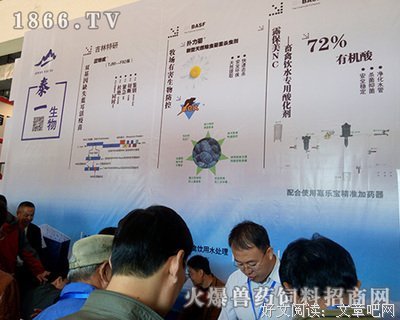《美丽青年全泰壹》经典观后感有感
《美丽青年全泰壹》是一部由朴光洙执导,文成根 / 洪景仁主演的一部剧情类型的电影,特精心从网络上整理的一些观众的观后感,希望对大家能有帮助。
《美丽青年全泰壹》精选点评:
●http://www.youtube.com/watch?v=W7hQyd5bxFQ
●纪念全泰壹逝世45周年
●作为一个文化弱势国家能拍出如此有精神力量的作品令人敬佩 男主让我想起了圣女贞德这个村妞 双线叙事与嵌套叙事 男主通过追忆和书写着全泰壹的故事来延续其斗争 电影这一媒介又重现了男主的这一故事 从叙事上就奠定了民主力量薪火相传星火燎原的理念基调 几乎每一处勾连过去与现在的匹配转场都匠心独运
●导演让李沧东的愤怒得以很好的安放其中
●95年柏林主竞赛,李沧东编剧,风格像70年代意大利政治片
●不知是不是脸盲症又发作了的原因,和基友一起在课堂上看的时候,觉得学生运动的一位演讲的女生的惊鸿一瞥,甚是与当年在北京尚是23岁的柴小姐的神态相似,无论是那悲天悯人的演讲语调,抑或是眉眼之间的“累爱”的表情,都很相似。
●当工人和学生站在了一起,没有人忘记全泰一,没有忘记他在火光之中奔跑着的呐喊。
●燃烧身体,让意志成为星星之火!
●全泰壹想要有一個受過教育的朋友,這部電影完成他的心願。1965-1970年。
●声影不同步我居然还给忍了下来…平和市场那场戏是高潮但不是李沧东,给雨中的警察送伞那段才是李沧东
《美丽青年全泰壹》观后感(一):The story itself is very powerfully
The film carried on in a very calm way. It was like someone telling a story. But the story itself is very powerfully. I didn’t see much violence in the film but I can still feel violence inside it. Maybe it is what politics is.
Using black and white picture is a good way to pay respect to the late “soldier” Jeon tae-il. And it’s easy for the audiences to tell the difference between now and the past. Jeon was obviously whom the director wants to praise. However, although the film has shown the life of Jeon tae-il, it didn’t show much detail about how he helped those young female tailors or how he organized the “fool organization” directly. I think it’s a smart way to let the audiences to think themselves.
Interestingly, the story was not only talking about Jeon tae-il. The book writer Kim Young-su and his wife Shin Jung-sun were also relevant to politics. Especially his wife, who was a law school student, wanted to found a party, but she and other members were threatened by some “conservatives”. Again, the director didn’t show the direct difficulties they confront. Instead, he just showed us that Shi was beaten by someone, that Kim was afraid of census.
The couple’s story told us that many years (maybe 5 years?) after Jeon’s death, the situation of politics was still the same. It is kind of irony.
Talking about Jeon’s death, I feel a little surprised. Why he chose such an extreme way to terminate himself? The director didn’t give him any hope? The smartest point is that at the end, “Jeon” and Kim met again, with Kim’s book on Jeon’s hand. One the one hand, Jeon’s death reflected how depressed Jeon was about the situation; on the other hand, the reunion implied that there was always a hope.
《美丽青年全泰壹》观后感(二):和平市场中那些年轻的心灵
我为此迟疑和苦闷了很长时间,
但在这一刻,我下定了决心。
我必须回到我贫穷的兄弟姐妹们身边,
回到我心灵的乐园,
回到和平市场中那些年轻的心灵中去,
他们是我生命的全部。
经过很长的思考后,我发誓:
我必须保护这些脆弱的生命。
我将抛弃自己的生命,我将为你们而死。
耐心等待吧,只要再等待片刻。
为了不离开你们,我将牺牲自己。
你们是我心灵的家园。
今天是星期六,八月的第二个星期六。
这一天,我下定了决心。
上帝,宽恕我吧。
全泰壹
1970年8月9日6
被火焰吞没的男人
今天的首尔东大门和平市场上有着商家自愿集资而建的一尊半身塑像,是一个年纪很轻的男人,他穿着朴素的制服,仿佛跪在那里,眼神中带着抹不去的哀怨与绝望。他是谁?一个被后世的韩国人奉为英雄般的人物,在他22岁的年纪,选择自焚抗议劳工所受到的非人处境。
他在韩国工人运动史被看作是“星星之火”的源头。他死后的七十年代全国爆发多次工人与学生的试图自杀式抗议。韩国劳工逐渐意识到自身的薄弱力量,开始自发地组织集体性地抗议。他的死亡示范效应不仅波及了工人,而且引发了知识分子的反思。大量的学生以了解工人处境发展工人运动为由,进入工厂实践。工人与学生,知识分子的紧密联系为八十年代民主化注入强大的力量。
电影全泰壹
自焚是所有自杀式抗争中最震撼也是最激进的方式。自焚的全泰壹总让我想起坐在西贡街头点燃自己的越南和尚。他们的死亡都有某种类似殉教的共同点。(反抗,还是反抗。)
但我也会警惕这种英雄式的自我牺牲。这里面有某种潜在的危险,牺牲精神作为人类最无私的道德行为,同样有可能会被权力集团所利用,冠以审美化的歪曲观点,实现自己的利益诉求。
对于很多英雄式牺牲的电影,美丽青年全泰壹算不上过于煽情的那一类。即使全片结尾的高潮处,电影也只用短短一分钟叙述自焚的情节。而自焚时只是拍摄燃烧的衣服与书,并未突出主角赴死时的面容,我想也是为了避免过分的渲染个人牺牲,防止观者产生过分廉价,非理性的情绪。
黑白与彩色,从未停止的运动
在朴正熙的独裁政府领导下,政府给予财阀大量的好处,并且大力发展以纺织业为主体的出口导向的经济。政府与财团的勾结造成劳工法的名存实亡。
真正在工人阶级抗争的历史中,起到领导地位的不是工人而是手工业者。手工业者比起经济上的剥脱更多意识到社会与道德的不平。在韩国传统文化中,手工业地位低下,“朝鲜王朝时期,很多手工业工人是从奴隶中征用的,目的是为宫廷和贵族生产纸张、用具、特殊服装和其他奢侈品。”
全泰壹的梦想就是能结识一位知识分子。他自己并没有受过教育,不像知识分子,他并没有从一开始对国家体制有强烈的质疑。此时的矛盾仅存在于受雇的劳工与非法的雇佣者之间。所以他学习劳动法,多次前往劳动部反映。不过他也渐渐从劳动部冷漠的态度以及老板们的势利中形成了一种无力,绝望之感。
影片行至中段,当作家在黑暗的屋子里写作,猛然回头发现青年全泰壹转身走过一段山路。此处从黑暗的屋子过渡到彩色的山路,再切换到黑白的回忆,仿佛是在暗示作家所处时代的抗争与全泰壹所产生的某种延续性。回忆的人物与作家之间的共情(Empathy)是全泰壹死亡真正的力量。也是透过电影这种媒介,使观者自我投射,跨入全泰壹的生命,与他形成对话,反问自己。
《美丽青年全泰壹》观后感(三):A Single Spark: 1960s, 1970s, 1990s.
When Chon T’aeil was fighting for the accomplishment of labor law, he wrote “I wish I can have a friend who goes to college.”. We can simply tell that in the 1960s, there was a gap between intellectuals and workers. Although Chon is heroic for dedicating his young life to democracy, although the self-immolation of Chon is even considered a “religious sacrifice”, the fact that Chon had no other choice but to flame himself to call for attention is desperate.
In the 1970s, we saw the educated and the working-class collaborated through Kim Yongsu, an intellectual who was writing the biography of Chon, ’s marriage with Shin Jung-soon, a labor woman. However, the social-political situation did not change much: labor rights were still not ensured. The nation was under President Park Chung-hee’s control for these two decades. Under the seeming miracle of rapid economic growth lead by him lie the life of hundreds of thousands of workers; but at least, there were people like Kim who could fight with their pens.
At the period when the movie could be produced and published in 1990s, the Korean society slightly improved its labor rights, but there was still not properly settled. As the beginning of the movie displayed, “It’s been five years since Chon’s death, the public seem to start forgetting him”, both Kim Yongsu, the writer of the book and Park Kwang-su, the director of the movie hoped for an everlasting remembrance of Chon T’aeil, the spirit of resistance. By addressing empathy of the public, Park wished minjung can gain reflection of themselves as well as current society, because every one of them is a single spark—those who donated money to help publishing the movie are Chon T’aeil, those who spoke for human rights are Chon T’aeil.
